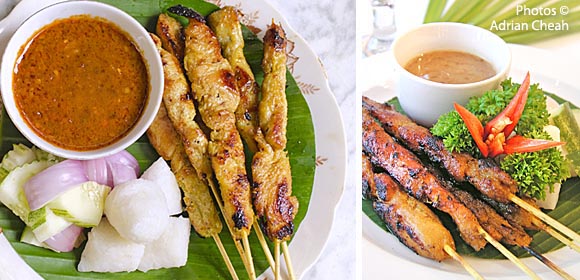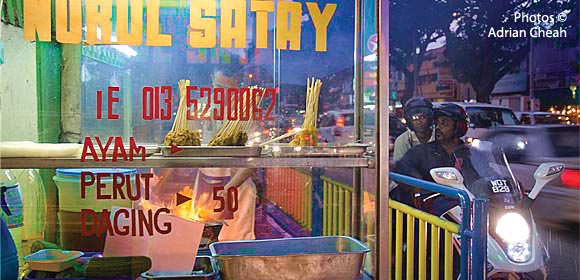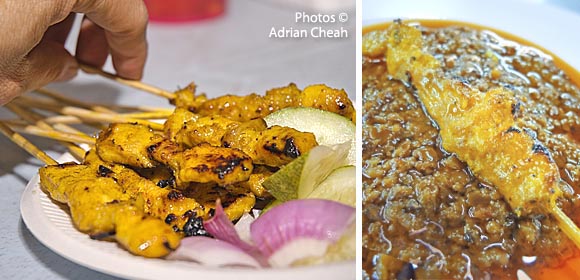Fanning the flames of satay

Satay is an example of how Penang cuisine was greatly influenced by the Arabs who came here to trade from the Middle East. Some say that this dish has Turkish roots. Be that as it may, satay has been available in Malaysia for many years already and is synonymous with Malay cuisine.


In the days of old, traveling peddlers would carry their wares balanced on a long pole and propped on the shoulder, going from house to house in a village, calling out "satay! satay!" Whenever there was an order, the seller would there and then set up the stove, light the fire, grill the satay, and layout the food on a small makeshift table for eating! These fast-food salesmen later set up permanent stalls by the roadside. Most are easy to find, just make a beeline for the source of the appetising aromas wafting through the air as the meat cooks over the charcoal flame.

Satay consists of chicken, beef, or mutton, bite-size pieces marinated in spices, skewered onto thin sticks and grilled over a charcoal stove. These kababs are popular during lunch, dinner and supper, where they are served as snacks. The chef ensures thorough cooking of the meat by fanning the fire and turning the sticks of satay over at the right time. It is always entertaining to watch them in action, as they prepare the satay with dexterous, rapid movements and at the same time fans the flames, which suddenly shoot up as tiny drops of oil catch fire. Basting continues while they are cooking. This prevents the meat from drying out and gives the meat a glazed look.

On my way back home after work, I would sometimes stop by Nurul Satay in Jelutong to buy a batch to be shared with the family. Through the years, my friendly satay man and I have gotten to know each other better while we chat as he fans the flames of satay. We would talk about our families and current issues, on the increase of sugar and oil prices and how they impact his business.

He has been selling satay for more than 15 years. He noted that work starts long before he opens up his stall and light the charcoal burners. He must slice up the chicken and beef into bite-size pieces and marinate it all for several hours in a special spice mixture, a closely guarded family recipe. He then treadles the meat through satay sticks and prepares the peanut sauce that accompanies the satay. He once cautioned that people who suffer from diabetics should consume less satay as the peanut sauce is laden with brown sugar.

Satay is best eaten fresh, straight from the charcoal stove and with its own savory peanut sauce, along with ketupat (compressed rice cakes), cucumber and raw onions. The recipe for the marinade and the peanut sauce vary from stall to stall. Having said that, you have to venture and go forth on an exciting satay-discovery trail to uncover your own favorite stall, and in Penang, you have many to choose from.
---------------------------------------------------------
Written and photographed by Adrian Cheah
© All rights reserved
January 2014